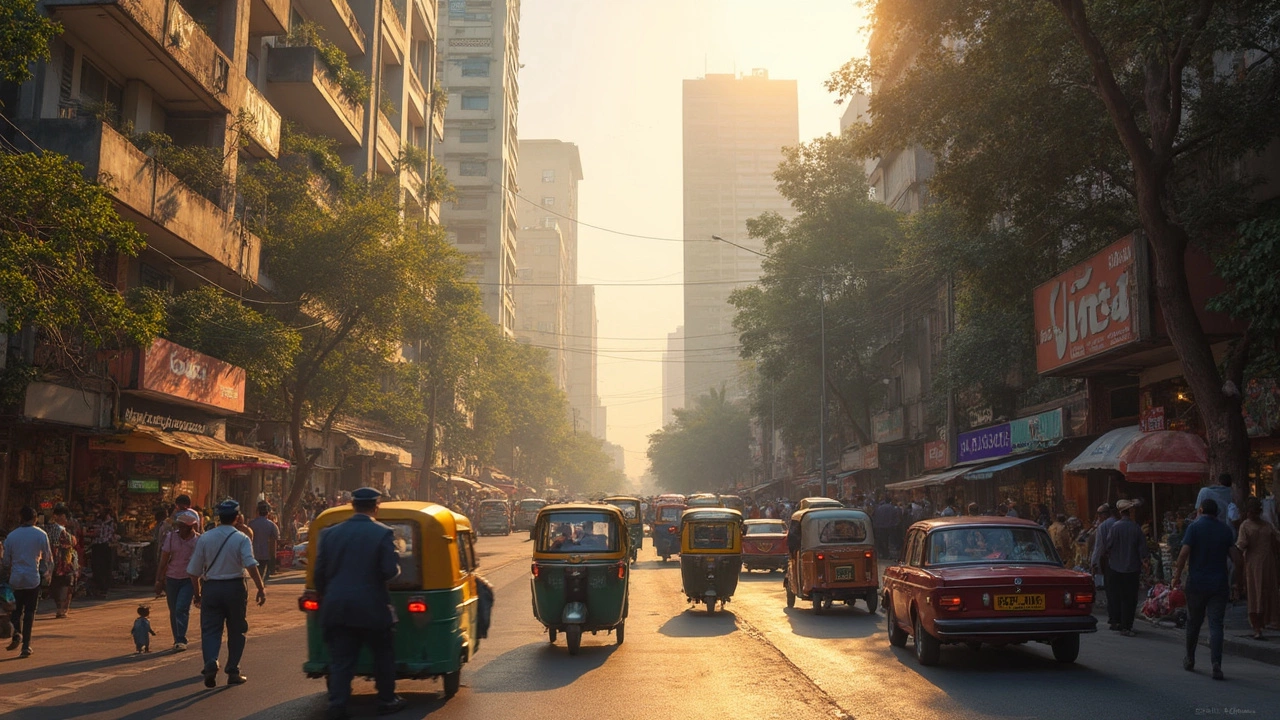Urban vs Rural India: What Sets Them Apart
India’s mix of bustling cities and quiet villages creates a unique landscape. If you’ve ever wondered why a Delhi street feels so different from a Punjab hamlet, you’re not alone. Below we break down the biggest contrasts and show why the line between them is blurring fast.
Key Differences You’ll Notice
Jobs and Income. Cities like Mumbai, Bangalore and Hyderabad host tech firms, BPOs and start‑ups that pay three to five times more than agricultural work in villages. In 2024, average monthly earnings in urban centers topped ₹55,000, while rural households hovered around ₹15,000.
Internet and Mobile Reach. Urban neighborhoods enjoy 4G/5G speeds, reliable broadband and a steady stream of online services. Rural areas have caught up a bit—government Digital India pushes now cover about 70% of villages, but connectivity still lags in remote pockets.
Education and Healthcare. City schools often have modern labs, qualified teachers and extracurricular options. Rural schools struggle with teacher shortages and limited resources. The same gap shows in hospitals: private specialists cluster in metros, while many villages rely on primary health centres.
Cost of Living. Renting a one‑bedroom flat in Bengaluru can cost ₹25,000–₹35,000, whereas a similar space in a village may be under ₹5,000. Even groceries are pricier in towns because of transport costs.
Cultural Rhythm. Urban life moves fast—commutes, coffee breaks, weekend gigs. Rural life follows seasonal cycles, festivals tied to harvests and stronger community ties. Yet city dwellers are adopting local traditions, and villagers are embracing pop culture through smartphones.
Why the Gap Matters and How It’s Changing
Understanding this divide helps businesses, policymakers and travelers make smarter choices. Companies targeting Indian consumers now segment ads based on city size or village connectivity. Governments allocate funds for rural roads, electricity and skill‑training to curb migration.
Migration is a two‑way street. Young people leave villages for work, but many return with new ideas, starting agro‑tech startups or remote‑friendly gigs. The rise of digital payments and e‑learning means a farmer can sell produce online or study a certification from his farmhouse.
Infrastructure projects accelerate the shift. New highway corridors link Tier‑2 cities like Indore and Coimbatore to nearby towns, reducing travel time and opening markets. Solar micro‑grids bring reliable power to off‑grid villages, enabling cold‑storage and small‑scale manufacturing.
Social attitudes are evolving too. Urban families now value calm, space and community, prompting a “reverse migration” where some professionals choose smaller towns for better quality of life. Meanwhile, rural festivals attract tourists, boosting local economies.
For you, the takeaway is simple: don’t paint India with a single brush. If you’re planning a trip, try a city stay plus a village homestay to feel the contrast. If you’re a marketer, tailor your message—talk about convenience and speed in metros, and about trust and local relevance in villages.
Bottom line—urban and rural India each have strengths and challenges. The gap is shrinking, thanks to technology, better roads and a generation willing to blend the best of both worlds. Keep an eye on the trends; they’ll shape where India grows next.
- Arjun Bhardwaj
- 20-06-25
- Life Status
Is Quality of Life in India Good? Honest Facts and Everyday Tips
Quality of life in India stirs up strong opinions, with big differences depending on where you live and your personal situation. From modern cities with booming jobs to rural villages facing basic challenges, India's living standards cover the whole spectrum. This article digs into work-life balance, public services, health and safety, and daily life hacks. You'll find eye-opening facts, useful advice, and honest insights about what it's really like to live in India. No sugar-coating, just the real deal.
Details